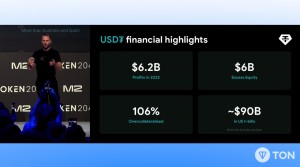The Board of Governors of the Federal Reserve System (Federal Reserve), the Federal Deposit Insurance Corporation (FDIC), and the Office of the Comptroller of the Currency (OCC) have issued a statement on the liquidity risks presented by certain sources of funding from crypto-asset-related entities and some effective practices to manage such risks.
The statement focuses on certain sources of funding from crypto-asset-related entities that may pose heightened liquidity risks to banking organizations due to the unpredictability of the scale and timing of deposit inflows and outflows.
For instance, deposits placed by a crypto-asset-related entity that is for the benefit of the crypto-asset-related entity’s customers (end customers) can be susceptible to large and rapid inflows as well as outflows.
This uncertainty and resulting deposit volatility can be exacerbated by end-customer confusion related to inaccurate or misleading representations of deposit insurance by a crypto entity, according to the Federal Reserve.
Effective practices for banking organizations
In light of these heightened risks, it is important for banking organizations that use certain sources of funding from crypto-asset-related entities to actively monitor the liquidity risks inherent in such funding sources and establish and maintain effective risk management and controls commensurate with the level of liquidity risks from such funding sources, says Federal Reserve.
Banking organizations could adopt effective practices that include understanding the direct and indirect drivers of potential deposit behavior from crypto-asset-related entities, assessing potential concentration or interconnectedness across deposits from such entities, and identifying associated liquidity risks.
Additionally, they could incorporate liquidity risks or funding volatility linked to crypto deposits into contingency funding planning, perform robust due diligence and ongoing monitoring of such entities, and assess the accuracy of representations made by these entities to their end customers about deposit accounts.
Inaccurate representations may lead to rapid outflows of such deposits, so monitoring and assessing these representations is crucial for effective risk management.
Why the warning from Federal Reserve, FDIC, and OCC?
The regulators wrote that certain sources of funding from crypto-asset-related entities might pose heightened liquidity risks to banking organizations due to the unpredictability of the scale and timing of deposit inflows and outflows.
The stability of deposits placed by a crypto-asset-related entity “may be driven by the behavior of the end customer” or by dynamics within the crypto sector rather than by a crypto partner itself, the regulators warned.
The agencies have highlighted the need for active monitoring of the liquidity risks tied to crypto-derived funding sources, assessing any potential concentration of funding they may have in the sector, monitoring representations their crypto partners may make to the market regarding funding, and incorporating liquidity risks into contingency plans, including stress tests for liquidity.
What is the impact on stablecoins?
The regulators labeled deposits related to stablecoin reserves as a liquidity risk. The added spotlight could serve as a nod to action by other regulators against Paxos and its partnership with Binance.
The New York Department of Financial Services ordered Paxos to stop minting a Binance stablecoin, and the Securities and Exchange Commission reportedly threatened to sue Paxos for violating investor protection laws.
The stability of stablecoin-linked deposits may hinge on market demand, the confidence of stablecoin holders, and the management of reserves by stablecoin issuers. Unanticipated stablecoin redemptions or dislocations can prompt rapid outflows, the regulators warned.





